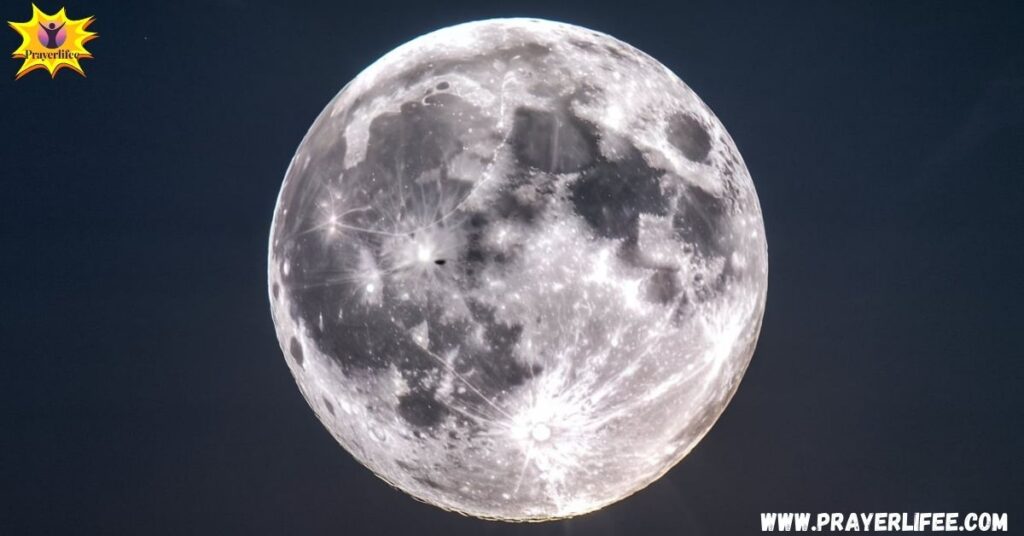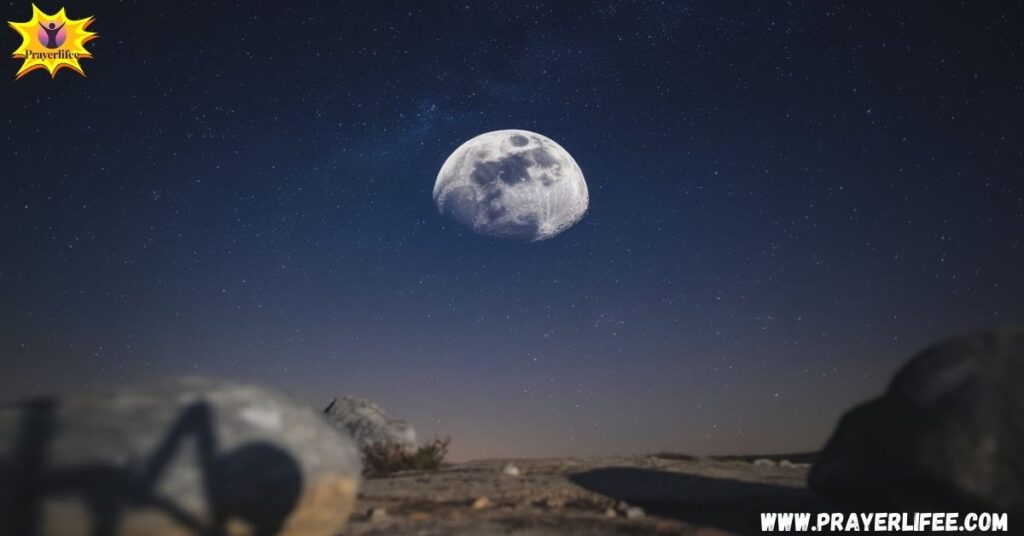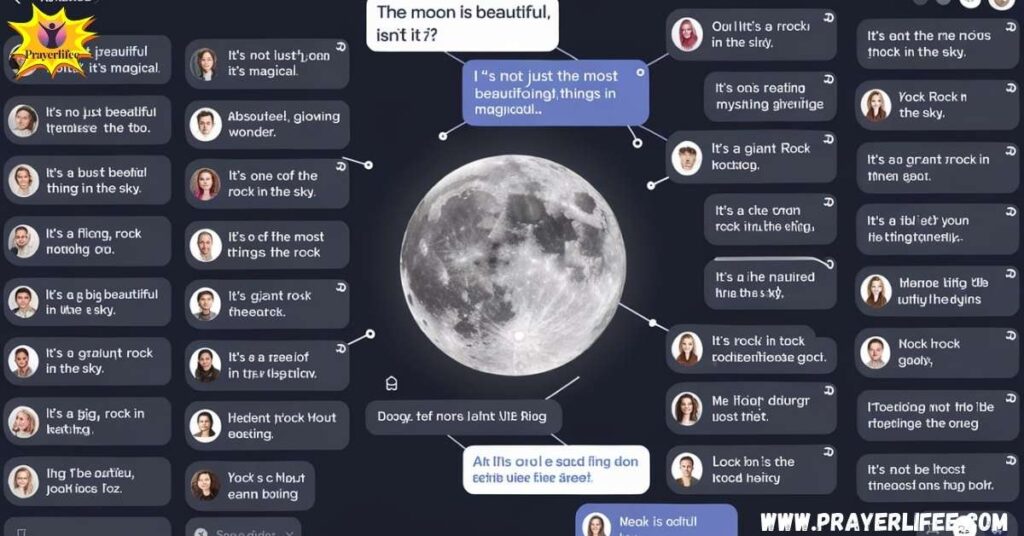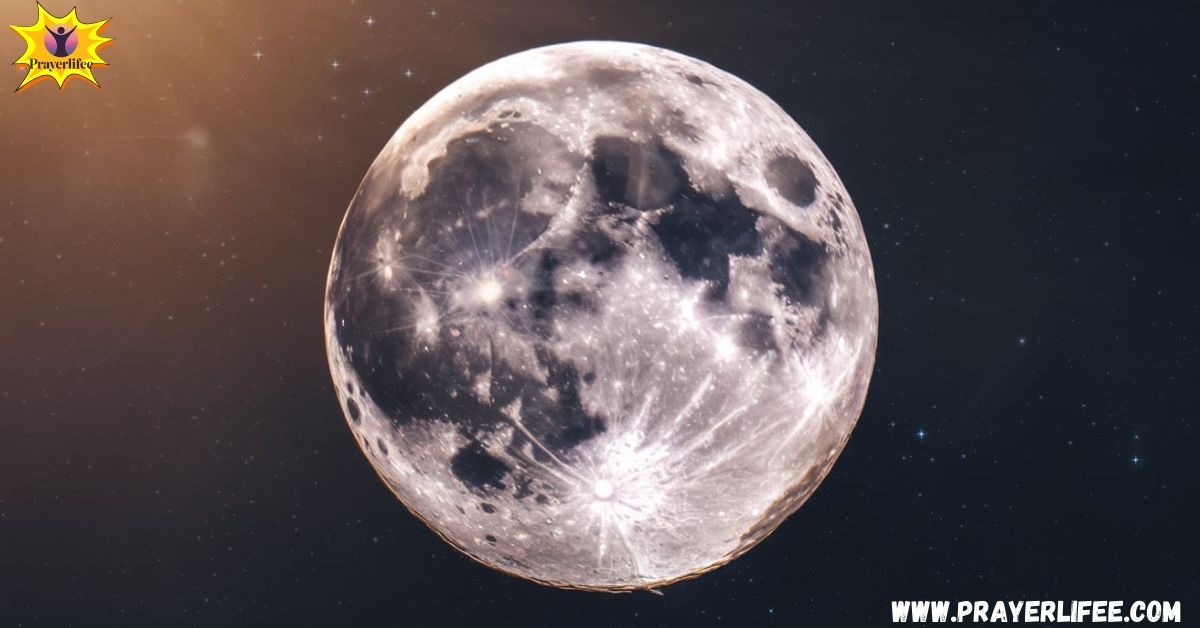When someone says, “The moon is beautiful, isn’t it?” they might be sharing more than just a thought about the night sky. Must-know replies are responses that help you connect deeply, whether romantically, playfully, or thoughtfully. These replies are essential for understanding the hidden meaning behind such poetic phrases.
Have you ever wondered how to respond when someone shares a moment like this? The right reply can turn a simple comment into a meaningful connection. Let’s explore how to craft the perfect response to this beautiful phrase.
In this article, you’ll find 30 must-know replies to “The moon is beautiful, isn’t it?” These responses range from romantic to playful, helping you navigate any situation. Whether you’re looking to express love, share a laugh, or simply enjoy the moment, these replies will guide you.
Understanding “The Moon is Beautiful, Isn’t It?”
The phrase “The moon is beautiful, isn’t it?” is more than just a poetic observation. It’s a subtle and indirect way to express emotions, particularly love. In Japanese culture, direct expressions of affection are often avoided in favor of more含蓄 (indirect) communication. This phrase is a perfect example of that.
When someone says this, they’re not just talking about the moon. They’re inviting you to share a moment of beauty and connection. It’s a way to say, “I care about you,” without being too forward. This style of communication is deeply rooted in Japanese aesthetics and philosophy, where subtlety and nuance are highly valued.
The Origin of the Phrase
The phrase “The moon is beautiful, isn’t it?” is often attributed to the famous Japanese novelist Natsume Soseki. Legend has it that while teaching English, Soseki translated the English phrase “I love you” into Japanese as “The moon is beautiful, isn’t it?” This was because direct expressions of love were considered too bold in Japanese culture. Instead, Soseki chose a more poetic and indirect way to convey the same sentiment.
This story, whether true or not, highlights the cultural importance of含蓄 (indirect expression) in Japan. It’s a reminder that sometimes, the most powerful emotions are conveyed through subtlety rather than direct words.
Hidden Meaning: Indirect Expressions of Love
In Japan, expressing love directly can sometimes feel too intense or even inappropriate. Instead, people often use indirect phrases like “The moon is beautiful, isn’t it?” to convey their feelings. This approach allows for a more nuanced and gentle expression of emotion.
For example, if someone says this to you, they might be trying to say:
- “I enjoy spending time with you.”
- “You make me feel at peace, just like the moon.”
- “I care about you deeply, but I’m not ready to say it directly.”
This style of communication is not just about avoiding awkwardness—it’s about creating a sense of shared understanding and connection.
How to Respond to “The Moon is Beautiful, Isn’t It?”

Responding to this phrase can be tricky, especially if you’re not familiar with its deeper meaning. The key is to match the tone and intention of the person speaking. Are they being romantic, playful, reflective, or neutral? Your response should reflect that.
Below, we’ve broken down 30 must-know replies into different categories to help you navigate any situation.
Verbal Replies for Different Contexts
Romantic Responses
If the phrase is being used romantically, your reply should be equally heartfelt. Here are a few examples:
- “Yes, but not as beautiful as you.”
- “It reminds me of the night we first met.”
- “The moon is beautiful, but it pales in comparison to your smile.”
- “It’s lovely, just like the moments we share.”
These responses show that you understand the deeper meaning behind the phrase and are willing to reciprocate the sentiment.
Playful Responses
If the mood is lighthearted, you can respond with a playful tone:
- “It is! Do you think aliens are watching it too?”
- “Beautiful, but not as beautiful as my pizza.”
- “It’s nice, but I’m more of a sun person.”
- “Yeah, but I bet it’s jealous of your glow.”
These replies keep the conversation fun and casual while still acknowledging the beauty of the moment.
Reflective Responses
Sometimes, the phrase might inspire deeper thoughts. In those cases, a reflective response is appropriate:
- “It makes me think about how small we are in the universe.”
- “It’s a reminder that even in darkness, there’s beauty.”
- “It’s amazing how something so far away can feel so close.”
- “It’s moments like these that make life worth living.”
These responses show that you’re engaged in the moment and willing to explore its deeper meaning.
Neutral Responses
If you’re unsure of the other person’s intentions, a neutral response is a safe bet:
- “Yes, it’s really stunning tonight.”
- “I’ve always loved the moon.”
- “It’s a clear night, perfect for moon-gazing.”
- “It’s beautiful, isn’t it?”
These replies acknowledge the observation without adding any additional layers of meaning.
Non-Verbal Replies: Communicating Without Words

Sometimes, words aren’t necessary. Non-verbal responses can be just as powerful, if not more so.
Physical Expressions
- A gentle smile while looking at the moon.
- Leaning closer to the person as you both gaze at the sky.
- Placing a hand on their shoulder or holding their hand.
Subtle Gestures
- Nodding in agreement while maintaining eye contact.
- Sighing softly to show appreciation for the moment.
- Offering a blanket or jacket if it’s chilly, showing care without words.
These actions can convey your feelings just as effectively as any verbal response.
Read Also: 100+ Roasts That Hurt and Rhyme: Guide to Savage Burns!
The Psychology of Japanese Indirect Communication

The Art of Japanese Indirect Communication
In Japan, indirect communication is seen as a way to maintain harmony and avoid conflict. It’s about reading between the lines and understanding what’s left unsaid. This style of communication is deeply rooted in Japanese culture and is reflected in everything from language to art.
Non-Verbal Communication in Japan
Non-verbal cues, such as body language and facial expressions, play a significant role in Japanese communication. For example, a slight bow or averted gaze can convey respect or humility. Similarly, a shared moment of silence can be just as meaningful as a conversation.
Impact on Relationships
Indirect communication can strengthen relationships by fostering a sense of mutual understanding. It allows people to express their feelings without putting pressure on the other person. This is why phrases like “The moon is beautiful, isn’t it?” are so powerful—they create a shared moment of connection.
The Modern Relevance of “The Moon is Beautiful, Isn’t It?”
Evolution of Japanese Romantic Phrases
While traditional phrases like “The moon is beautiful, isn’t it?” are still used, modern Japanese culture has also embraced more direct expressions of love. However, the beauty of含蓄 (indirect expression) remains a cherished part of the culture.
Using the Phrase Outside of Japan
In the USA and other Western countries, this phrase is gaining popularity as a poetic and unique way to express love. It’s a reminder that sometimes, the most meaningful words are the ones left unsaid.
Key Takeaways
- The phrase “The moon is beautiful, isn’t it?” is a poetic and indirect way to express love, rooted in Japanese culture.
- Responses can vary based on context, ranging from romantic to playful to reflective.
- Non-verbal replies, such as gestures and physical expressions, can be just as powerful as words.
- Understanding the psychology behind indirect communication can deepen your appreciation for this phrase.
Whether you’re using this phrase to express your feelings or responding to someone else, remember that the beauty lies in its subtlety. So the next time someone says, “The moon is beautiful, isn’t it?” you’ll know exactly how to reply.
FAQ,s
How do you reply to “The moon is beautiful, isn’t it”?
To reply to “The moon is beautiful, isn’t it?”, you can respond romantically, reflectively, or playfully depending on the context.
What is meant by the moon is beautiful, isn’t it?
“The moon is beautiful, isn’t it?” is an indirect way of saying “I love you” in Japanese culture, expressing affection without direct words.
How to confess in Japanese moon?
To confess love in Japanese using the moon, you would say “The moon is beautiful, isn’t it?” as a poetic and subtle way to express your feelings.
What does it mean if someone tells you the moon is beautiful, isn’t it?
If someone tells you this, they are likely expressing affection and using it as a subtle way to say “I love you” without being direct.
Conclusion
The phrase “The moon is beautiful, isn’t it?” is far more than a simple observation—it’s a window into a culture that values subtlety, nuance, and the beauty of unspoken emotions. Rooted in Japanese tradition and popularized by figures like Natsume Soseki, this phrase has transcended its origins to become a universal expression of love, connection, and shared moments of beauty.
Whether you’re responding with a romantic reply, a playful quip, or a reflective thought, the key is to match the tone and intention of the person speaking. And sometimes, the most powerful response isn’t verbal at all—it’s a shared glance, a gentle touch, or a quiet moment of appreciation under the moonlight.
As this phrase continues to gain popularity in the USA and beyond, it serves as a reminder that communication isn’t always about the words we say. Often, it’s about the feelings we convey through our tone, our gestures, and our willingness to connect on a deeper level.

